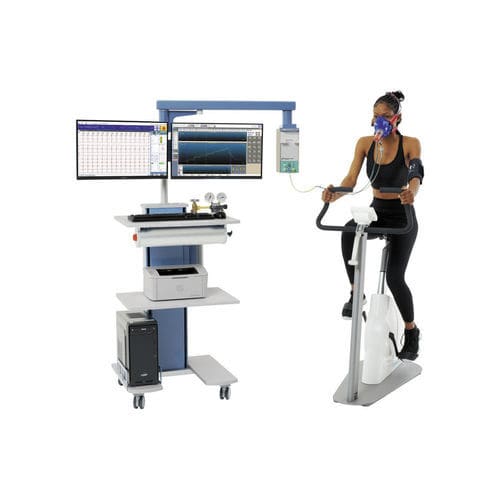Cardiopulmonary exercise testing provides a global assessment of the integrative exercise responses involving the pulmonary and cardiovascular system
Ergospirometry is increasingly being used in a wide spectrum of clinical applications for the evaluation of undiagnosed exercise intolerance and exercise-related symptoms
International guidelines and requirements
Statement on Cardiopulmonary Exercise Testing American Thoracic Society and American College of Chest Physicians November 1, 2001
Clinician’s Guide to Cardiopulmonary Exercise Testing in Adults
A Scientific Statement from the American Heart Association, Circulation Journal, 2010-07-21
Standardization of Lung Function Testing
Comfortable solutions for the patient and for medical staff as well
Extremely small and light patient circuit
PinkFlow flow meter without any moving parts and electrical connection
Single use or disinfectable patient circuit
Automatic calibration and self test
Exercise modes
Bicycle and treadmill
Selectable and user definable exercise testing protocols
Progressive incremental bicycle exercise protocols Step and Ramp
Maximal incremental treadmill protocols Bruce protocol and Balke protocol
Constant work rate protocol
Multistage exercise protocol with a pseudo steady state at each level
Discontinuous protocol
Measurement modes
Breath by breath gas analysis
Mixing chamber gas analysis (optional)
FVC measurement
IVC measurement
MVV measurement
Normal ECG recording






